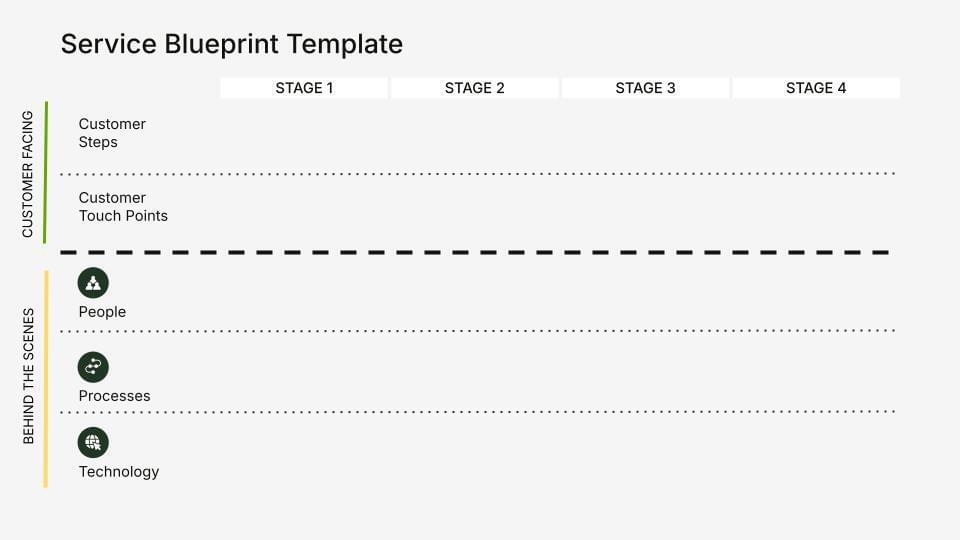Article • 5 min read
Why service design should be at the core of your CX strategy
Here's the blueprint for AI-powered experiences that are seamless, personalized, and impactful.
Selina Tedesco
Senior Customer Insights Manager at Zendesk
Última atualização em July 24, 2025
While you may not be familiar with service design, you’ve almost certainly experienced the frustration of its absence. Maybe you tried to return a product, only to get trapped in an endless loop of chat bots and disconnected phone calls. Or perhaps you’ve filled out a stack of forms at a doctor’s office, only to have to repeat the information minutes later.
These frustrating experiences aren’t the result of bad intentions or a business trying to ruin your day. They’re the result of poorly designed systems that don’t take the full customer journey into account. Because when your business operates in disjointed silos, the experience gets fragmented, customers become confused or stuck, frustration builds, CSAT lowers, and loyalty weakens.
That’s where service design comes in: it’s the intentional orchestration of every part of the customer journey to make it feel like one fluid, seamless experience. By focusing on how people, processes, and technology work together, you can ensure that every interaction is built around the customer – deliberately, cohesively, and end-to-end.
A new era of service
There’s no better time to reimagine how your customer experience comes together. Customer expectations are at an all-time high with quick and personalized responses, frictionless handoffs, and consistently high-quality support now expected as the norm. As more businesses compete for customers’ attention and loyalty, great experiences have become a core differentiator and a competitive advantage for those who get it right.

At the same time, CX leaders have more tools at their disposal than ever before to design exceptional experiences. Agentic AI, generative search, and advanced AI agents offer a powerful toolkit, but they’re only as effective as the journey they support.
That’s why CX leaders need an intentional, clear AI strategy that can meet rising customer demands and deliver lasting value. Not sure where to start? Take a look at the key stages your customers engage with your customer experience. Focus on how each touchpoint connects, especially the moments that carry the most weight—things like booking and check-in with an airline, or resolving a lost card or suspicious charge with a bank.
Applying a service design lens to your AI strategy requires you to first understand how customers actually experience your business.
Here are a few questions to consider:
How do customers first discover and learn about your business? Are purchasing decisions simple and do you set expectations upfront to reduce confusion (and ticket volume) later?
When problems arise, is the resolution process smooth, consistent, and easy to navigate? How much are touchpoints and information consistent? Can you reduce friction between hand off points?
And throughout it all, does your brand come through clearly and cohesively? Are you leveraging critical moments to build authenticity and trust with your customers?
Tackling these questions effectively requires alignment, input, and thinking from across your organization. Bringing in a few strategic partners at various levels and across teams like research, marketing, product, engineering and your CX org helps shape a future journey that’s both ambitious and grounded in the needs of your customers.
Mapping what matters: using service blueprints to align teams around the customer journey
A service blueprint is a powerful, visual tool that can facilitate conversations around your AI CX strategy. At its core, a service blueprint maps out key stages in the journey, such as discovering a product, making a purchase, or seeking support, and distinguishes between the visible interactions a customer has and the internal processes that enable them.
By laying everything out in one shared framework, service blueprints create a clear, common language for teams to discuss what’s working, what’s not, and where friction or disconnects might be occurring. A service blueprint becomes a conversation starter, helping cross-functional teams explore the current state of the journey and collaboratively envision a future experience that’s smoother, more connected, and truly customer-centered.

3 steps to evolve your CX strategy with a service blueprint:
Whether you’re refining a process or reimagining your entire customer journey, a service blueprint helps you build alignment on the future of your CX strategy.
Here’s how to get started:
1. Create a service blueprint of your current customer journey
Start by mapping out what your customers experience one stage at a time, articulating what they currently see, feel, and experience, alongside the internal processes that support those moments. Bring together a few strategic partners from teams from across the organization at various levels to create an honest, comprehensive view of the experience as it stands today. Supplement this shared picture with insights from QA, customer feedback, and UX research to ground your blueprint in real-world data and interactions. This will give you a complete, nuanced look at the state of your operations today.
2. Identify pain points
Once you understand the current state of your customer journey, you can begin to spot the areas of friction for your customers or your internal teams. Are repetitive or manual tasks slowing things down? Are handoffs creating confusion or delays? What about common pain points or customer complaints that keep surfacing in your QA data? These pressure points often hold hidden opportunities for improvement.
3. Articulate your ideal state for the future
With a solid view of the current experience and accompanying pain points, teams can work together to surface new opportunity areas and reimagine a new, future-state service blueprint. This is a key moment to explore the art of the possible and ask big questions about what your customer experience could be. What would a seamless experience look like if nothing held us back? How could AI or automation lighten the load for agents and delight customers? By mapping this future state collaboratively, you create alignment around a shared north star that everyone can work toward together.
Making the vision real
With both your current and future state mapped out through a service blueprint, you can begin to bridge the gap between point A and point B with clarity and purpose. This is where strategic conversations come to life—asking questions like: What changes will have the highest impact with the least effort? What capabilities do we already have that can help us move forward? What can we pilot today to start making progress?
At Zendesk, we offer the guidance, expertise, and tools to help you shape and activate your future state journey. Whether it’s testing new ideas or rapidly experimenting with AI, it’s never been easier to take meaningful steps toward a smarter, more seamless customer experience.
